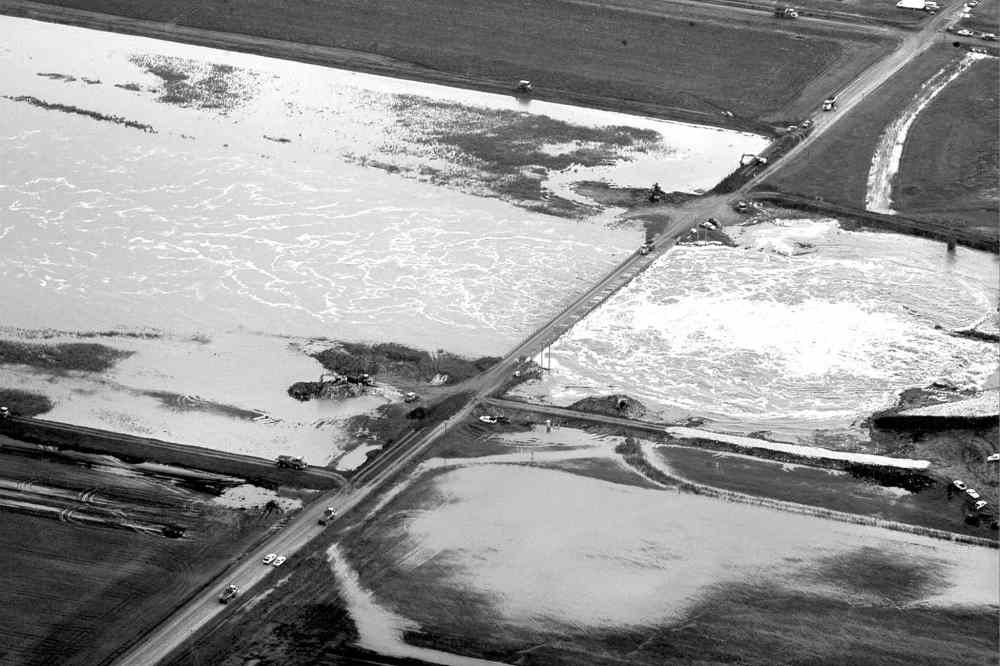A winter of discontent means flooding issues
Advertisement
Read this article for free:
or
Already have an account? Log in here »
To continue reading, please subscribe:
Monthly Digital Subscription
$1 per week for 24 weeks*
- Enjoy unlimited reading on winnipegfreepress.com
- Read the E-Edition, our digital replica newspaper
- Access News Break, our award-winning app
- Play interactive puzzles
*Billed as $4.00 plus GST every four weeks. After 24 weeks, price increases to the regular rate of $19.00 plus GST every four weeks. Offer available to new and qualified returning subscribers only. Cancel any time.
Monthly Digital Subscription
$4.75/week*
- Enjoy unlimited reading on winnipegfreepress.com
- Read the E-Edition, our digital replica newspaper
- Access News Break, our award-winning app
- Play interactive puzzles
*Billed as $19 plus GST every four weeks. Cancel any time.
To continue reading, please subscribe:
Add Free Press access to your Brandon Sun subscription for only an additional
$1 for the first 4 weeks*
*Your next subscription payment will increase by $1.00 and you will be charged $16.99 plus GST for four weeks. After four weeks, your payment will increase to $23.99 plus GST every four weeks.
Read unlimited articles for free today:
or
Already have an account? Log in here »
Hey there, time traveller!
This article was published 20/03/2015 (3857 days ago), so information in it may no longer be current.
As spring approaches so, too, does flood season. For Lake Manitobans, where flooding never seems far away, it has been another winter of discontent.
The summer of 2014 saw another massive flood and, as in 2011, it was man-made. It was caused by water artificially diverted from the Assiniboine into the lake via the Portage Diversion.
Lake Manitobans are flooded chiefly to protect those on the lower Assiniboine floodplain. When the diversion is open, water pours into the lake at the south end; at the north end, the outflow is much too small to handle the extra inflow.

The only hope for Lake Manitobans is to lower the level over the winter. To do this, outflow through the Fairford water control structure needs to be held high. That did not happen this winter.
With the lake just under flood level last fall, outflows were cut by the province in the first week of November. The announced plan was for a brief reduction to prevent the formation of frazil ice on the Dauphin River, and flooding of downstream communities. Flows were to be restored after six weeks. But they were not restored. The six-week reduction in flows is now a nearly six-month reduction. And outflows were cut further earlier this month.
To summarize, water is artificially diverted into Lake Manitoba in summer to protect people who live on the Assiniboine floodplain. In winter, outflow was cut to protect people downstream. Lake Manitobans are caught in the middle.
There seems no hope of relief from enduring high water levels that have made wide swaths of grasslands unusable for cattle ranchers, have crippled a once-thriving commercial fishery due to the enormous ecological impacts and have brought lakeside communities to their knees as seasonal and permanent residents have departed.
Thus it is with considerable alarm we hear the Portage Diversion is being opened within the next couple of days to protect those along the lower Assiniboine. Again.
What was the year of the flood has become the decade of the flood. Since 2011, the lake has rarely been inside its operating range. Flooding in 2011 extended into 2012. Water remained high in 2013 and in 2014 flooding was renewed. At the beginning of 2015, with the lake as high or higher than was at the same point in 2011 and 2014, we are one major rainstorm away from another flood.
With now five years to address this issue, we have no better ability to manage water levels than before 2011. The much-ballyhooed Emergency Channel, built on the wrong lake, has been a dud. It was built on Lake St. Martin to allow Fairford flows to remain wide open over winter. That hasn’t happened and the lake fell only slightly since November and will soon rise again.
There is much justifiable concern about proposed flood-mitigation measures along the lower Assiniboine. Residents of St. François Xavier, for example, are worried about what will happen if Assiniboine flows are raised from the current maximum of roughly 17,000 cfs to 23,000 cfs. During high-water years, those on the Assiniboine floodplain experience the ravages of flooding for a few days or weeks. Turn those weeks into years, and that is what Lake Manitobans have endured.
Lower Assiniboine residents should be raising hell about the failure of water management on Lake Manitoba. People around the lake would not mind opening the Portage Diversion quite so much if there were room to put the water. There is no room this year. In it pours anyway.
To date there has been much talk about the need for new flood infrastructure. The PST increase was justified in large part because of this. But there has been almost nothing tangible done.
Interlake MLA Tom Nevakshonoff made a telling remark to a Free Press reporter as he was switching allegiance from Steve Ashton to Theresa Oswald on the second ballot of the NDP leadership convention: He wanted a leader who would effect repairs from the 2011 and 2014 floods faster.
Two days later Mr. Selinger was quoted in the Globe and Mail: “A community under water has no economy, and in Manitoba we’ve learned the hard way that when you invest in flood protection it makes a gigantic difference.”
Indeed it would. But you haven’t. When are you going to start?
Scott Forbes is an ecologist at the University of Winnipeg and science adviser to the Association of Lake Manitoba Stakeholders.

